 When she gets them on the hook they never get off. 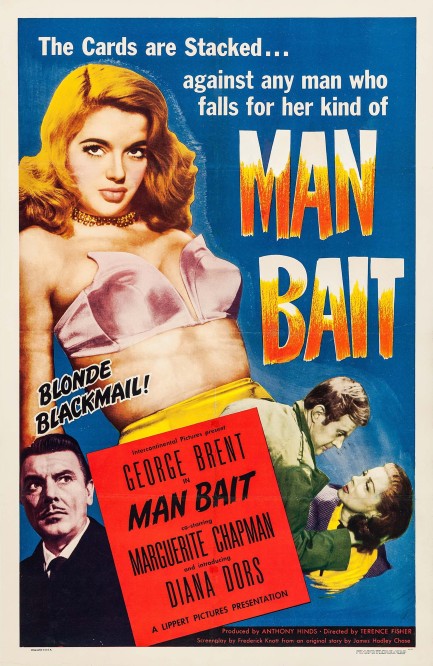
The beautiful photo-illustrated poster you see above was made for the British drama Man Bait, featuring George Brent, Marguerite Chapman, and Diana Dors. We gave it a watch, and for some reason the opening credits say, “introducing Diana Dors,” though this was actually her thirteenth credited role. We won't try to puzzle out that mystery. Plotwise, Dors and her irresistible lips are the bait, as she's convinced by a lowlife male acquaintance to blackmail her boss out of three-hundred pounds by threatening to lie about him making an unwanted advance toward her. Unfortunately, Dors is a reluctant scam artist, which puts her at odds with her manipulative accomplice. To say that everything goes wrong for her because of this relationship is an understatement.
Overall, Man Bait is a good film. While Dors is adequate in her role (she was still only twenty-one, despite her previous experience), Brent and Chapman, who both had dozens of films on their résumés at this point, are flawless as the blackmail victim and his loyal employee. An undercurrent of unrequited love prompts Chapman to side with Brent even though things look pretty bad for him as the plot progresses. But there's no need to be too terribly worried—the movie was made during the Hays Code censorship era, so you know crime can't pay. Sure, the Code was American, but even British productions adhered to it if they hoped to earn a U.S. release. Man Bait did when it premiered in Los Angeles today in 1952.
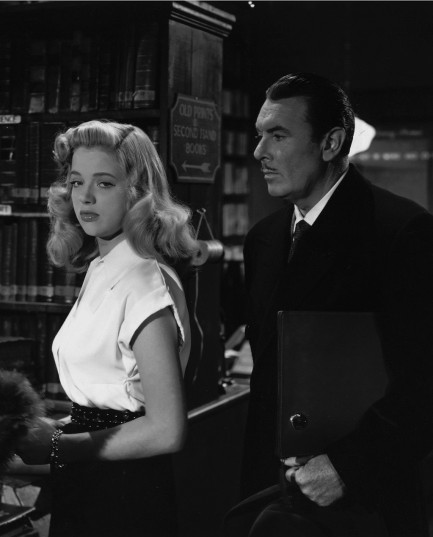 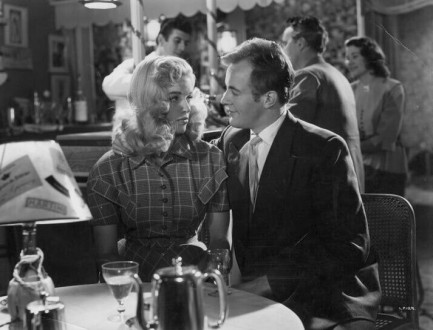 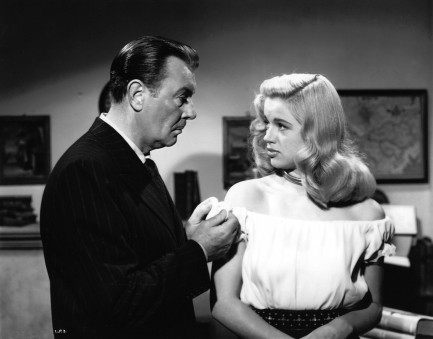 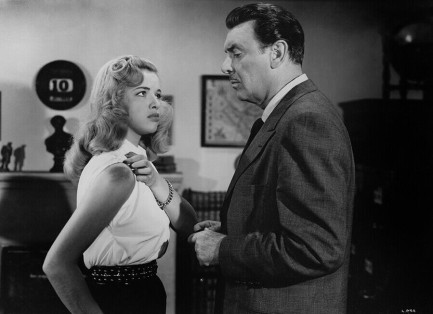 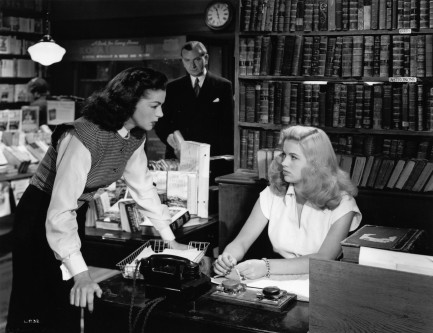 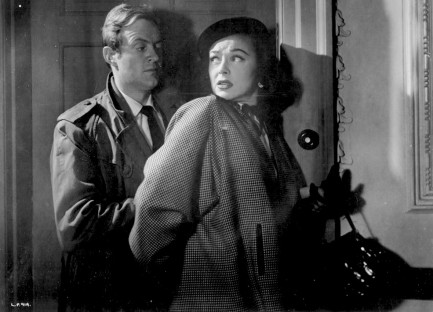 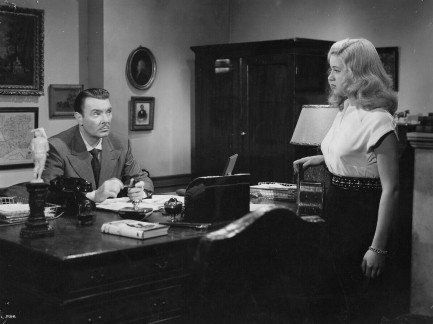 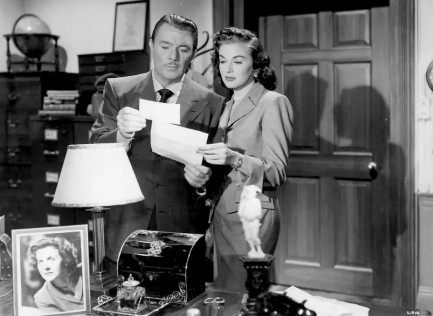 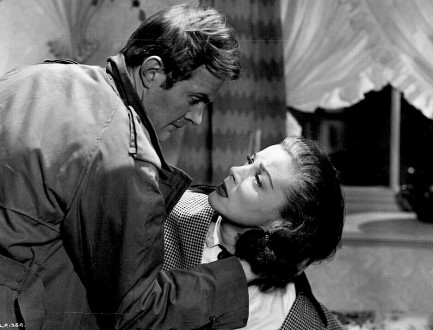 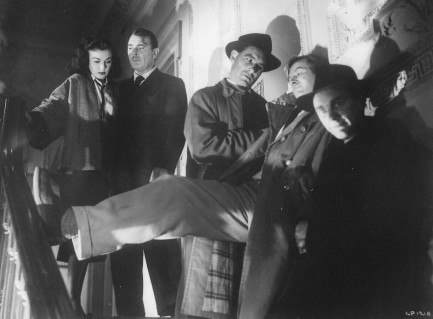
In order to qualify as a temptation there has to be a chance you can resist. These are not a temptation—they're a certainty.
 Reality says she's way out of his league. Entertainment tradition says she isn't. 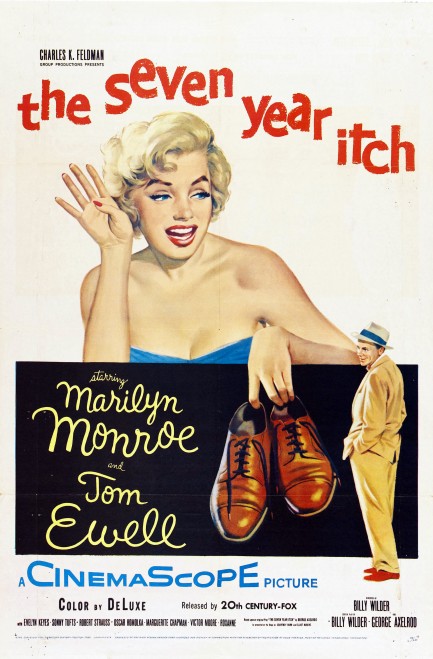
Above you see a poster for the Marilyn Monroe comedy The Seven Year Itch, which we're taking a close look at today because it's a pulp movie. No, really. It isn't a pulp movie in a standard way, but how can we ignore a film, even though it's a comedy, that happens to be about the pulp industry? Perhaps some of you have forgotten this detail, but co-star Tom Ewell plays an editor at a 25¢ publishing house, where among other important duties he repackages literary classics with sexy, good-girl-art covers. If you look just below, Ewell's secretary Marguerite Chapman displays the company's latest reimagining—a racy makeover of Louisa May Alcott's Little Women. They've featured scantily clad women in the art, and added the tagline: “The secrets of a girls dormitory.” So even though thousands of online scribes have written about The Seven Year Itch, its setting in the pulp publishing realm demands that we discuss it too. 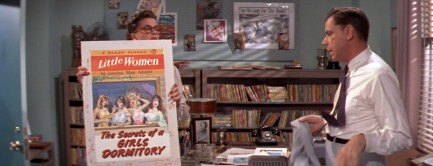 But of course, pulp is merely the backdrop; the movie is really all Monroe. We know it comes across as anachronistic to some viewers, but this film is completely modern in at least one important way. The trope of a schlubby everyman scoring with—or at least turning the head of—a woman much more beautiful than him is still a linchpin of American entertainment. Let us count the examples: There's Something About Mary, Big Bang Theory, King of Queens, She's Out of My League, Night Shift, Forrest Gump, Bewitched, Superbad, Knocked Up—in fact, anything with Seth Rogen in it—and not to be forgotten, both Beauty and the Beast and Lady and the Tramp. In all of those, the female love interest, whether human or cocker spaniel, is objectively too beautiful for the lead male. It's a trope that has always worked, and probably always will because it's primarily males who are marketed to in cinema and television.
In The Seven Year Itch the hot girl/ugly guy theme is doubly funny because Ewell's wife is played by Evelyn Keyes, and she's supposed to be, we guess, not out of Ewell's league. Uh huh. Hollywood, right? Keyes is plenty hot, though of course she's no Monroe. Cue eyeroll from our girlfriends. They aren't clear on why so many men find Marilyn attractive. To them she's a little fat, which is no surprise from the perspective of our pint-sized better halves, but the weight of actresses varied greatly during the mid-century era, from the zaftig Jayne Mansfield to the reedy Audrey Hepburn. Marilyn was somewhere in the middle of the voluptuous range—i.e. not fat. However, her weight did fluctuate. In Something's Gotta Give she was thin enough to be about perfect for current sensibilities. She made any level of poundage look good though, because, first and foremost, she was impossibly cute. This look right here: 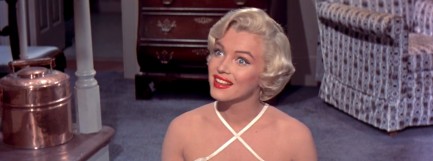 Those blue eyes of hers that are pointed in slightly different directions. That's hot. That look also captures Monroe's go-to instrument as an actress—an expression that conveys an expectant, scrubbed, and somewhat (but never totally) naive sex appeal. Having watched her dramas as well as her comedies, there's no doubt her gift was for the latter. Her comedies are unimaginable without her, and she was in her own class. Bardot played the same kittenish character at times, and Demongeot, and other actresses, but Marilyn was simply the best. The Seven Year Itch showcases an eternal star shining her brightest, as she plays a twenty-something aspiring actress who moves in upstairs from the klutzy Ewell, whose wife is away for the summer. Monroe proceeds to unknowingly fuel all sorts of male fantasies that—surprise—start to come true, as the lack of air conditioning in the upstairs flat has her increasingly avoiding it in favor of Ewell's. Those blue eyes of hers that are pointed in slightly different directions. That's hot. That look also captures Monroe's go-to instrument as an actress—an expression that conveys an expectant, scrubbed, and somewhat (but never totally) naive sex appeal. Having watched her dramas as well as her comedies, there's no doubt her gift was for the latter. Her comedies are unimaginable without her, and she was in her own class. Bardot played the same kittenish character at times, and Demongeot, and other actresses, but Marilyn was simply the best. The Seven Year Itch showcases an eternal star shining her brightest, as she plays a twenty-something aspiring actress who moves in upstairs from the klutzy Ewell, whose wife is away for the summer. Monroe proceeds to unknowingly fuel all sorts of male fantasies that—surprise—start to come true, as the lack of air conditioning in the upstairs flat has her increasingly avoiding it in favor of Ewell's.
The way the script is built, with each encounter between Monroe and Ewell another line on the way to potential infidelity is crossed, until the crossed line becomes literal when Monroe discovers that the apartments—which had once been a single two-level residence—are reconnectible by pulling some nails out of the floor where a staircase had been closed off. The possibility of actually living with Marilyn is a delicious dilemma, ingeniously lifted right out of the male id by director/writer Billy Wilder and co-writer George Axelrod. The movie obviously isn't totally wonderful. Some see it as sexist, and certainly its opening sequence of actors painted up like a native American tribe is pure minstrelry, but just like people, movies can harbor out-of-date ideas without being malicious. As long as that line isn't crossed, we can appreciate both The Seven Year Itch, and how far we've progressed since it was made. It premiered today in 1955, and you can see a couple more excellent posters here and here.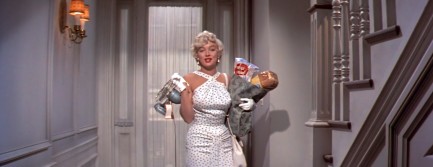 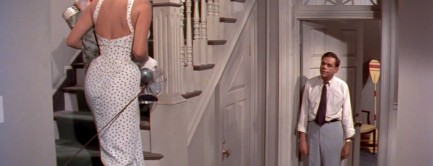 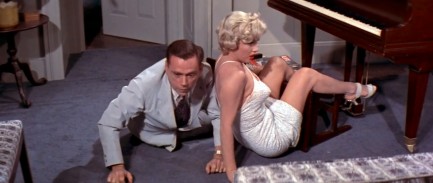 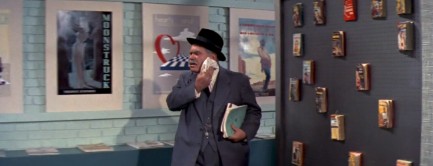 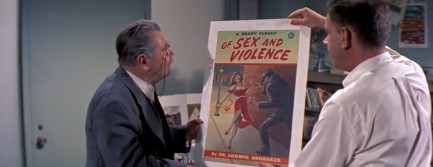 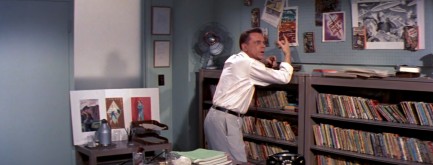 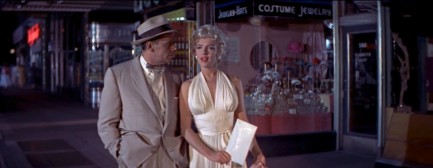 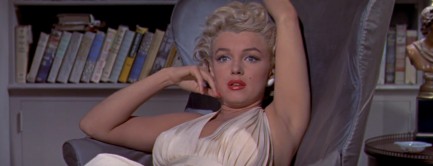 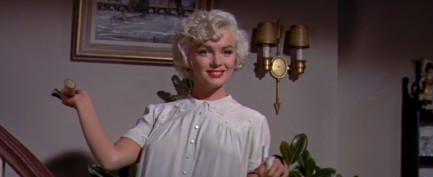 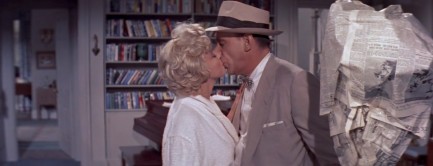 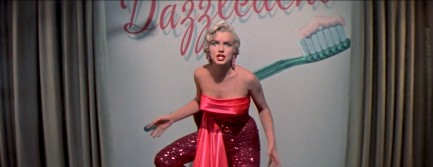 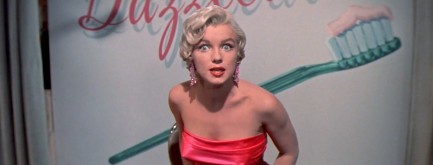
 New tabloid serves up Russell, Monroe, and others. 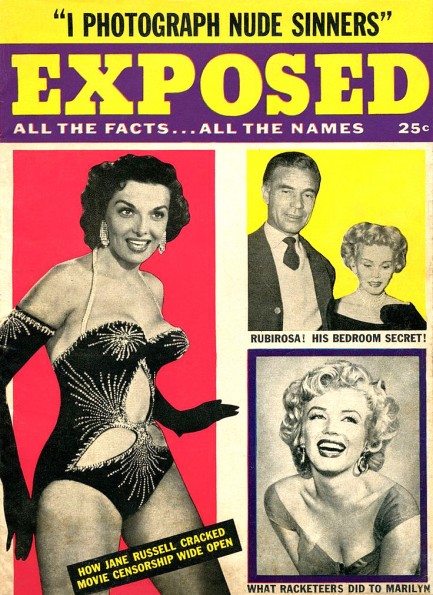
Jane Russell, wedged into an outfit that turns her boobs into footballs, graces the cover of the debut issue of Exposed, a high budget tabloid launched by Fawcett Publications in 1955. It arrived on a crowded newsstand already occupied by Confidential—then arguably the most circulated magazine in the U.S.—as well as Whisper, Hush-Hush, Uncensored, and similar publications. The get-up Russell is wearing is a costume from her starring role in 1954's The French Line, and we sort of assumed the shot had been at least slightly doctored,  and we seem to be correct. Judge for yourself at right. At least her boob punishment was offset by the fact that her outfit was too flimsy to include one of the deadly corsets that sometimes made their way around stars' waists. and we seem to be correct. Judge for yourself at right. At least her boob punishment was offset by the fact that her outfit was too flimsy to include one of the deadly corsets that sometimes made their way around stars' waists. Russell is in Exposed to illustrate a story about sex in cinema, but she isn't the most exposed occupant of the magazine. That would be Marilyn Monroe, whose famous Playboy nude is reprinted for a story about hustlers reprinting her photos. We'll just assume Exposed licensed their Monroe shot. Apparently, though, those other miscreants were selling her likeness by the thousands without permission and without compensating Monroe. Exposed shows her in court testifying for prosecutors. The prosecution may have won its case in 1955, but in the here and now Monroe is sold from Tegucigalpa to Manila, unlicensed all of it. Which just goes to show the more things change the more they stay the same. Probably the highlight of the issue is a long story about detectives who make their living catching cheating couples in action. Exposed offers up numerous photos of these pairs caught in the act in motel rooms and secluded homes. Are these photos real? Well, we have our doubts. Even the most cleverly posed action shots have those intangibles that mark them as fakes, but that's just our opinion. Judge for yourself. Elsewhere in Exposed you get “Sophie” Loren, Errol Flynn, Marguerite Chapman, Franchot Tone, and other big time celebs. We're pretty proud of this acquisition. It wasn't terribly expensive, but we've seen it priced much higher than what we paid. Maybe down the line we'll flip ours for a tidy profit. But that's what we always say. Much to the Pulp Intl. girlfriends' chagrin, our office just piles higher and higher with mid-century ephemera and we haven't sold a single piece yet. Exposed goes to the top of the precariously tottering pyramid. We have about thirty-five scans below, and plenty more tabloids on the way.
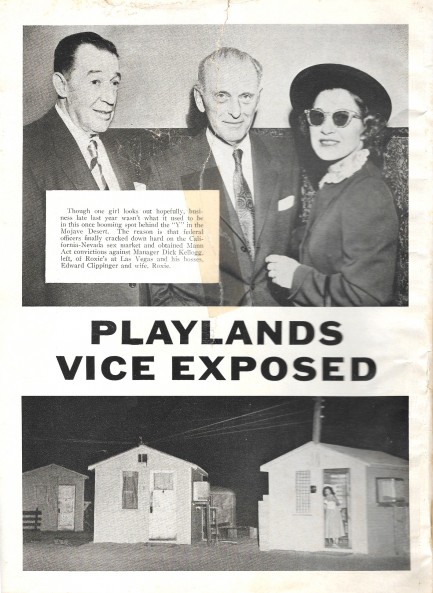 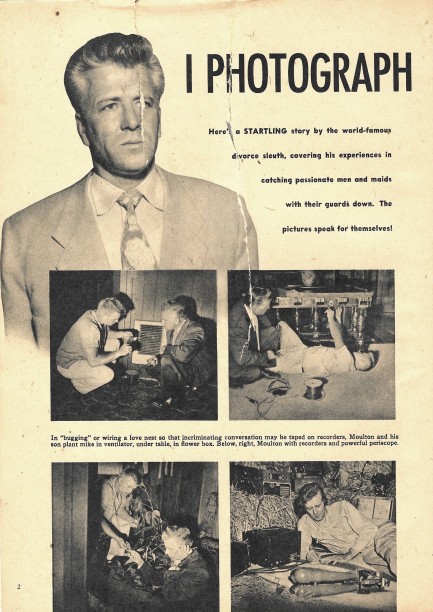 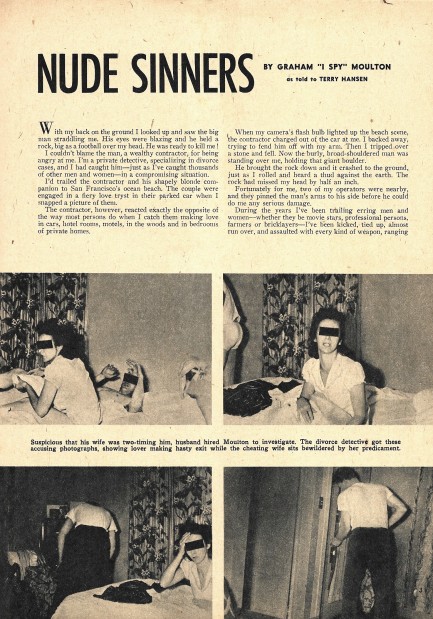 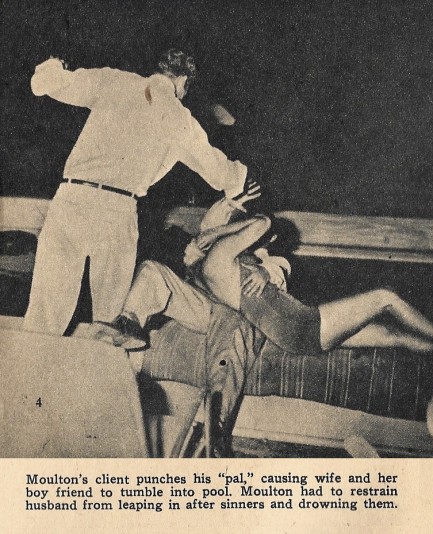 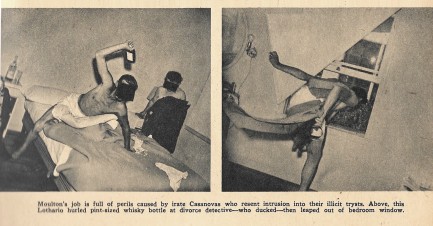 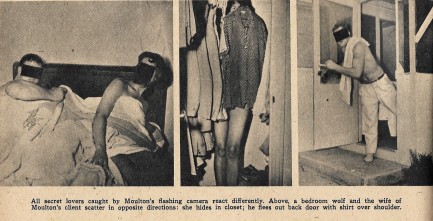 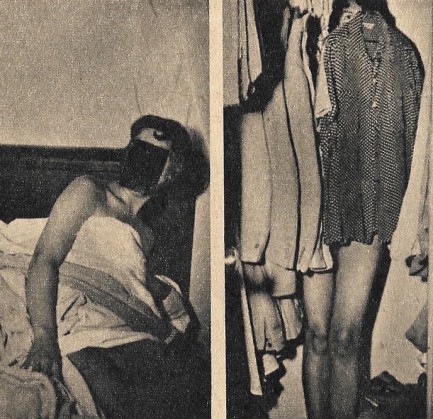 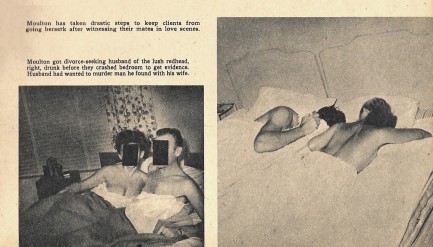 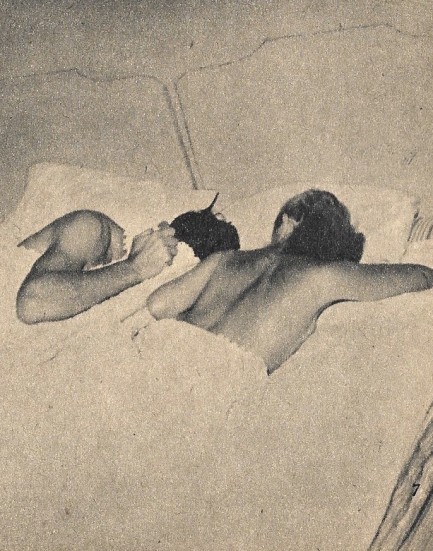 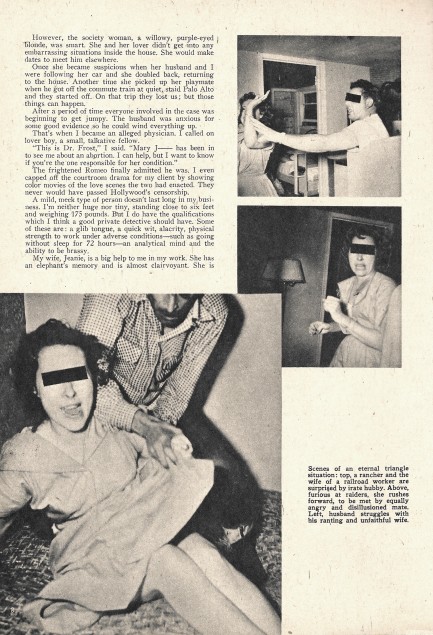 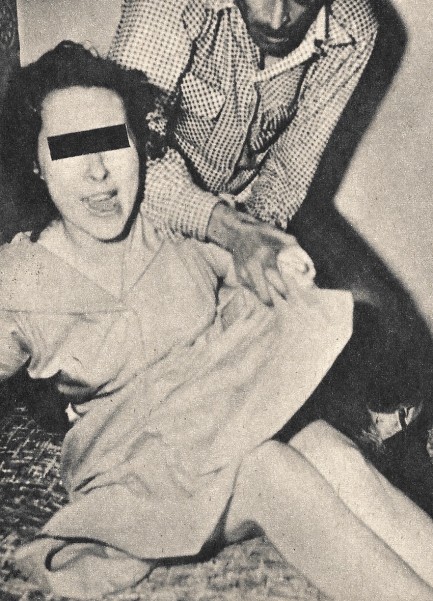  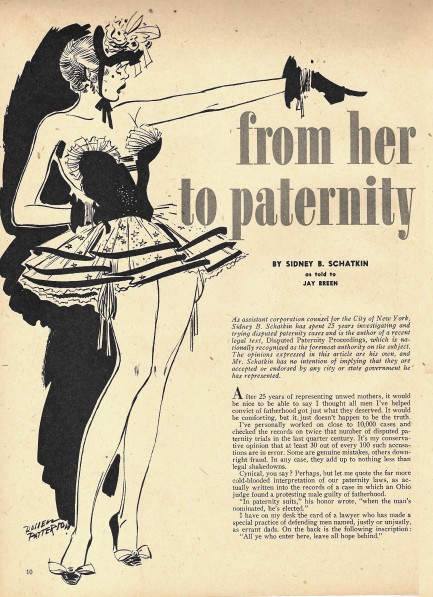 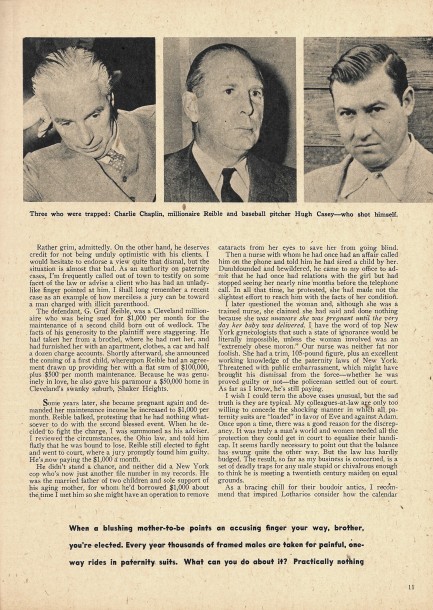 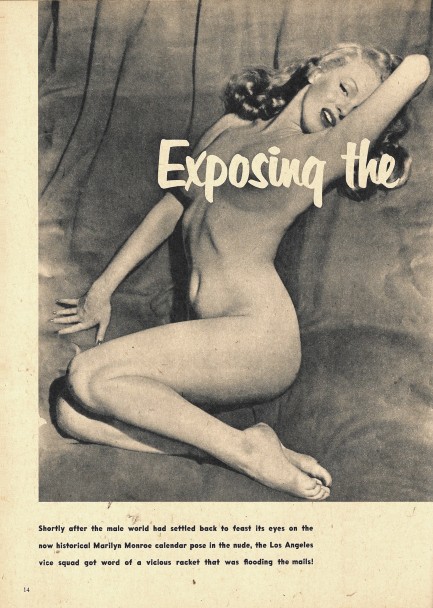 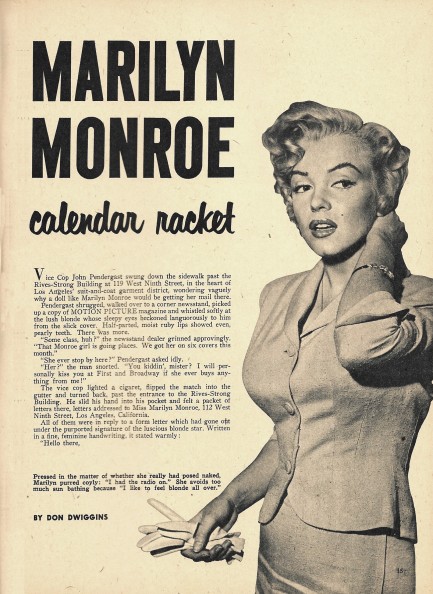 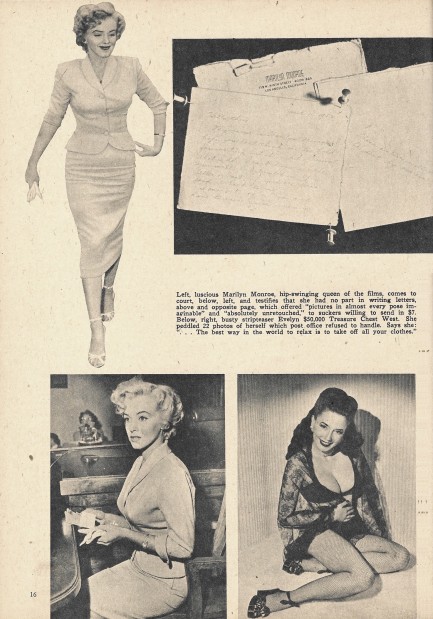 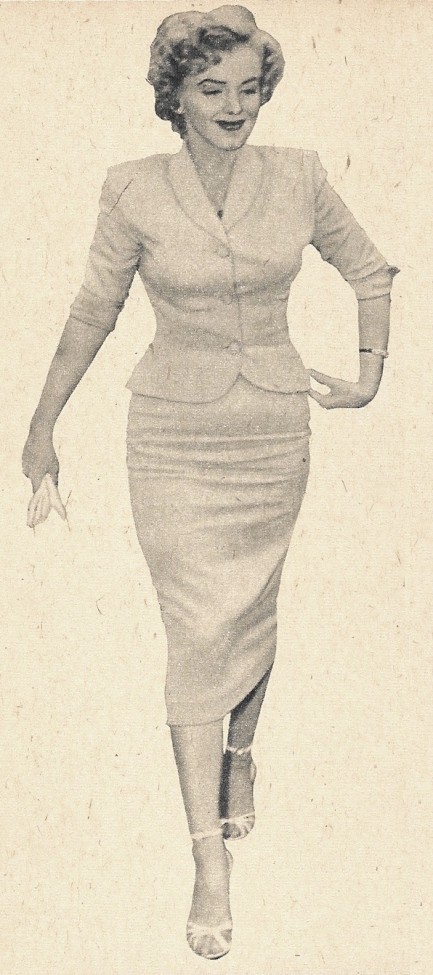 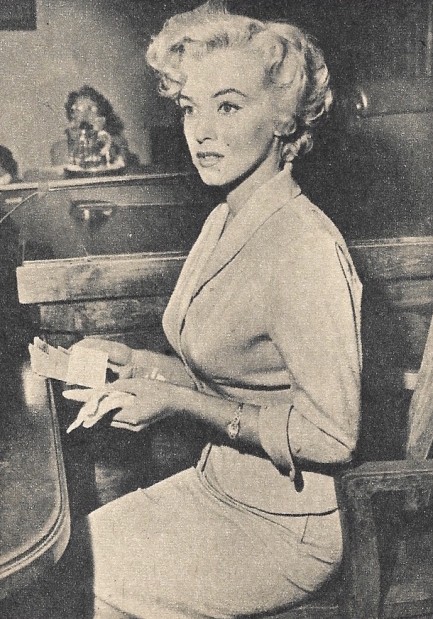 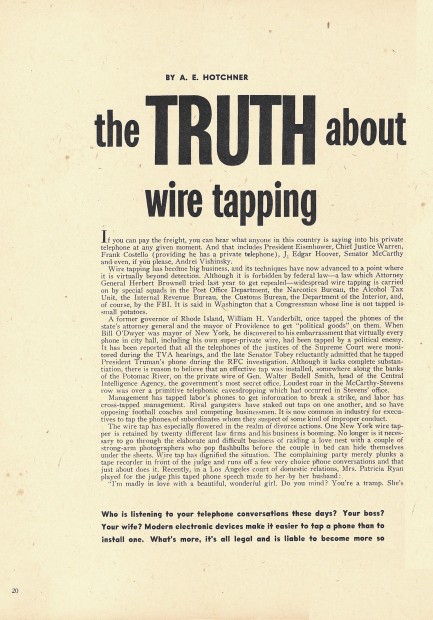 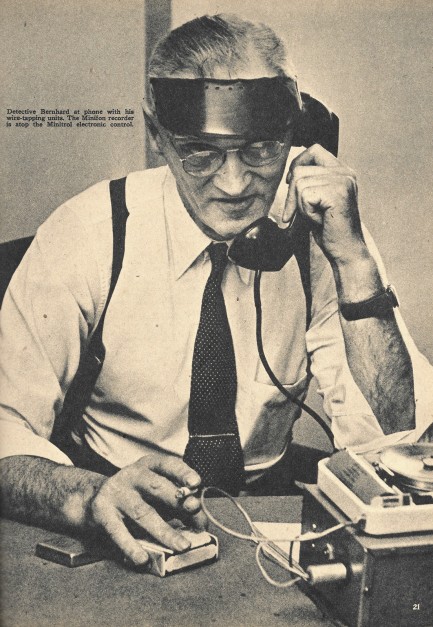 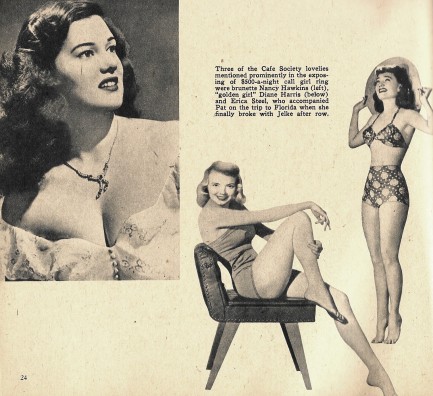 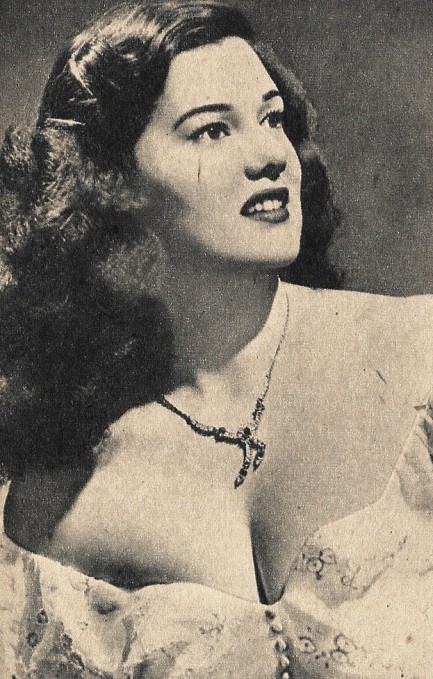 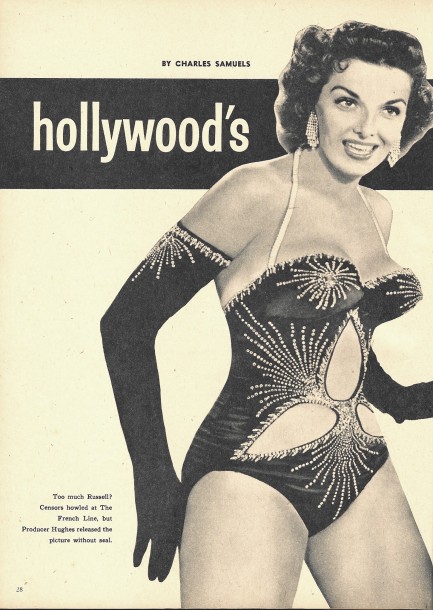 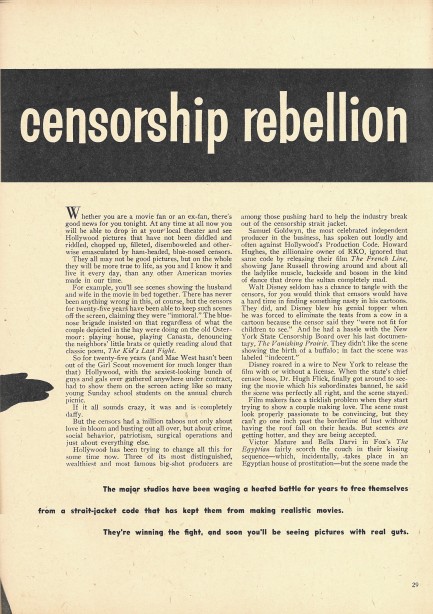 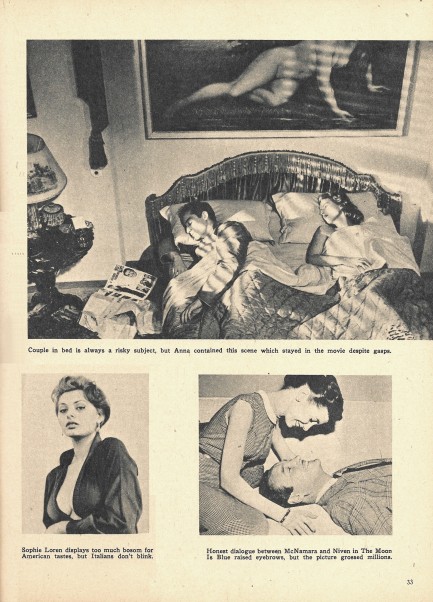 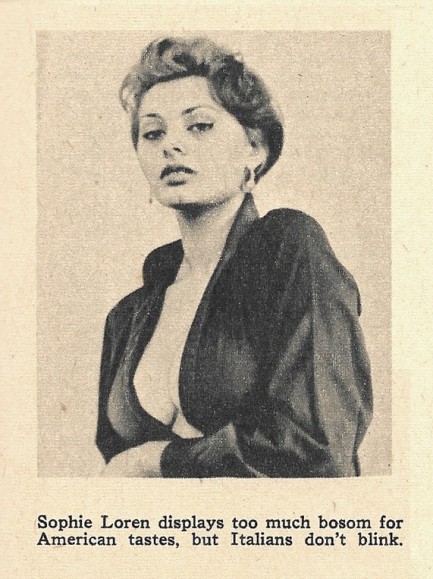 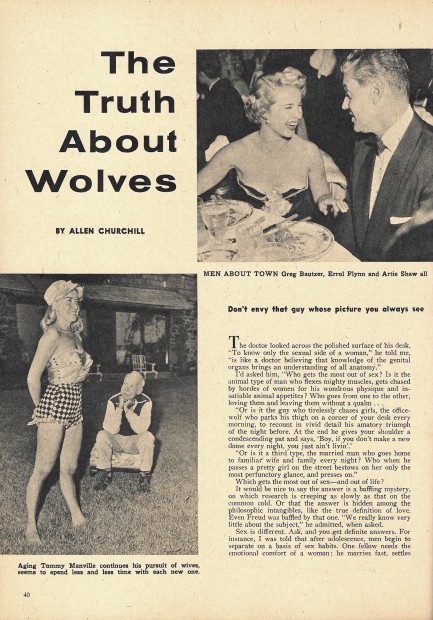 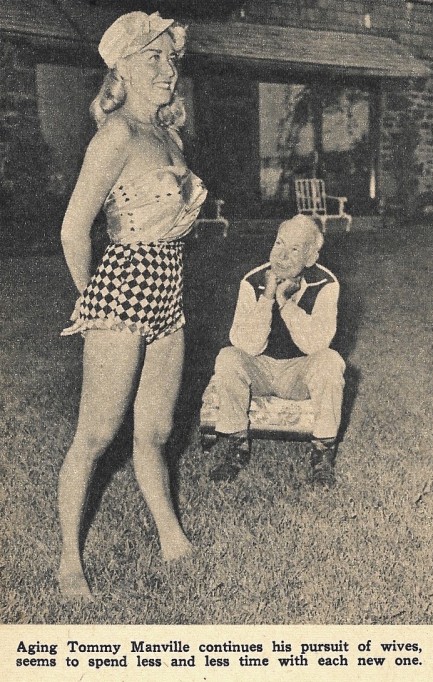 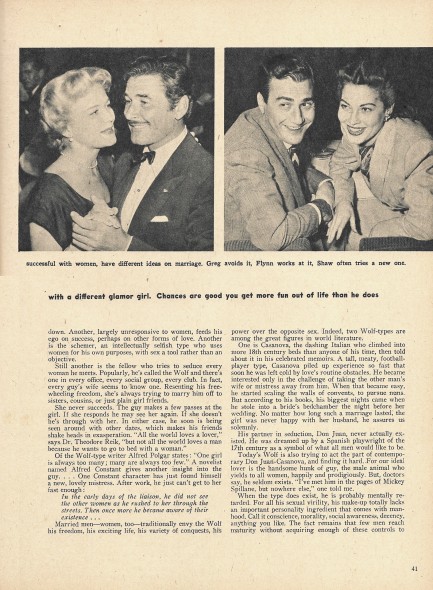 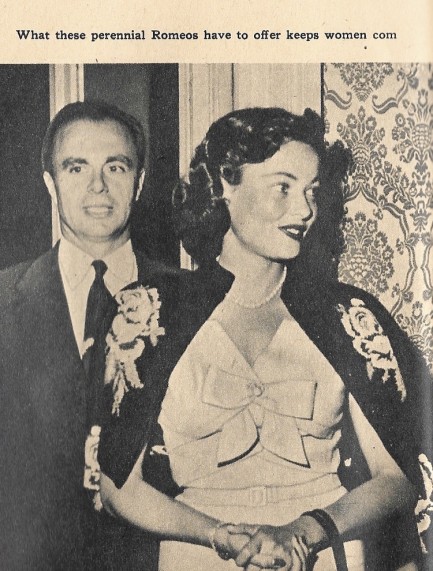 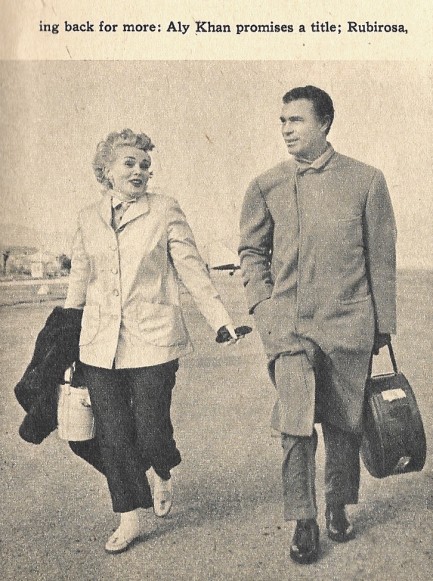 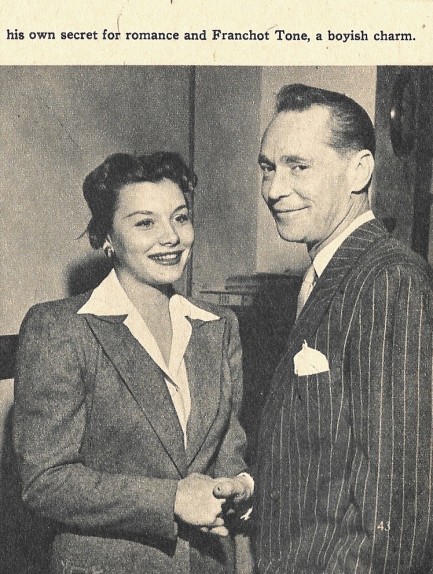 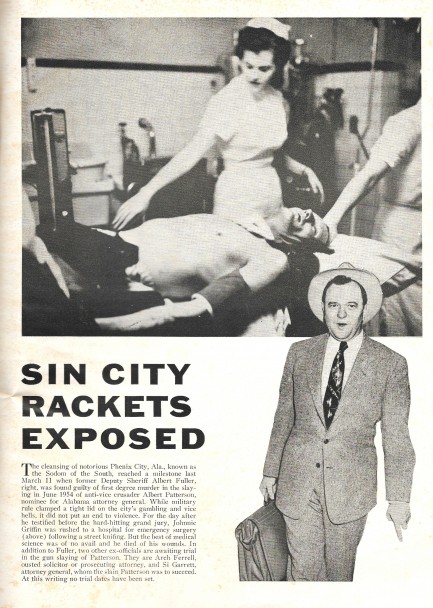
 Everybody who was anybody got inside. 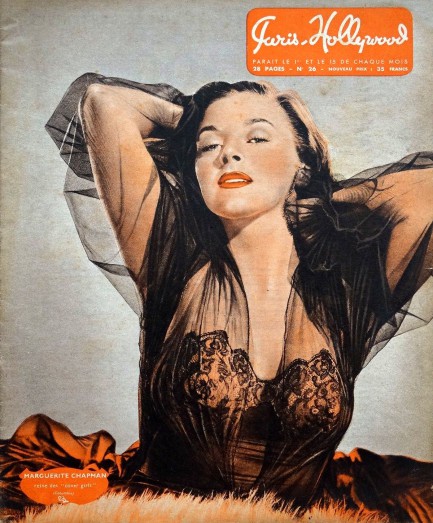
Above and below, scans from the French show-biz and showgirl magazine Paris-Hollywood, issue 26, from 1948. The front cover features Marguerite Chapman, the rear Arlene Dahl, and in between you get Cyd Charisse, Patricia Roc, Martha Vickers, Alexis Smith, Anne Jeffreys, Luce Feyrer, Edwige Feuillère, Marlene Dietrich, and other luminaries. That's quite a collection of celebs. In upcoming years the magazine would spend more time on cabaret dancers, but its early issues were all about international stars. We picked up a few of these in Paris a while back and we’ll get to some detailed scans of those soon. In the meantime, you can see more from Paris-Hollywood here, here, and here. 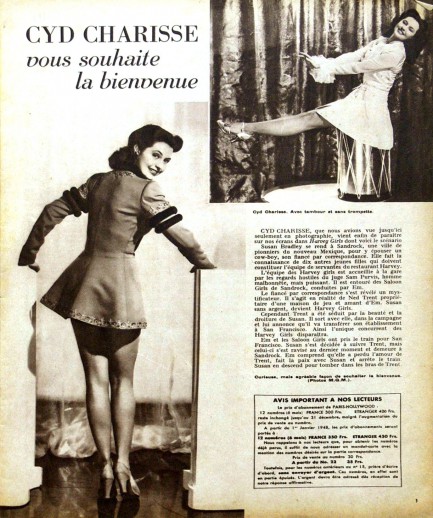 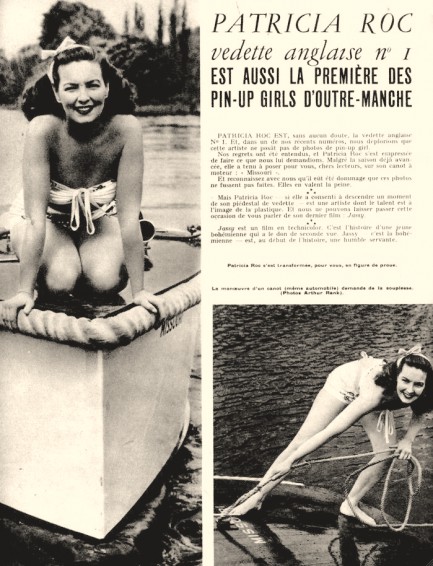 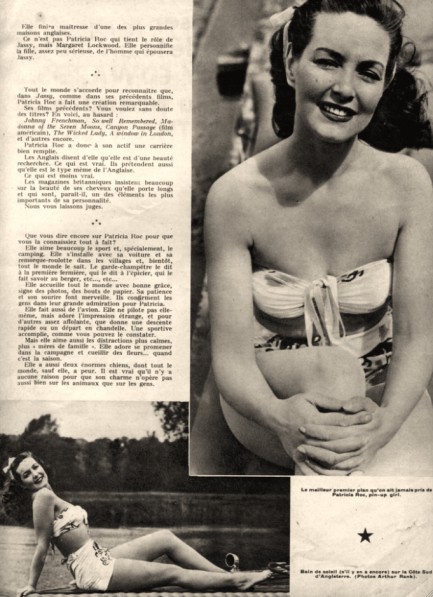 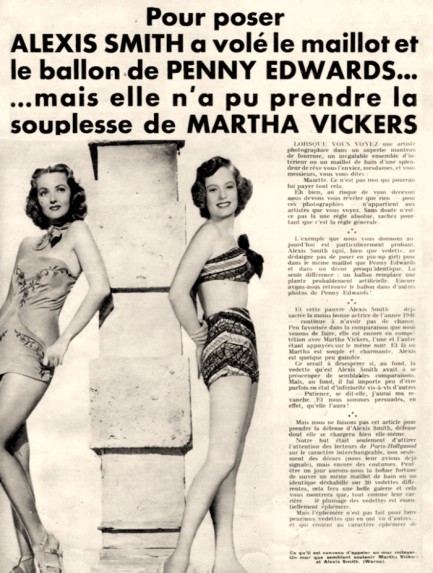 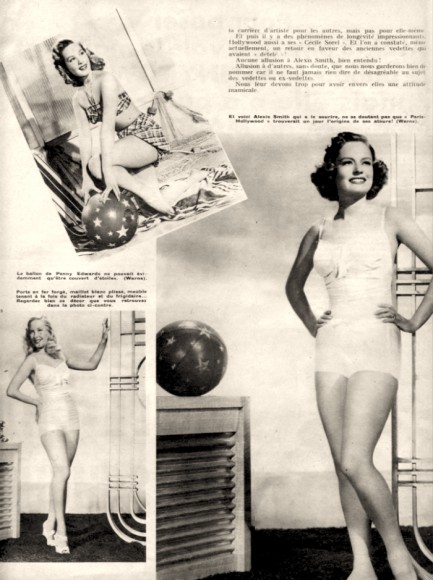 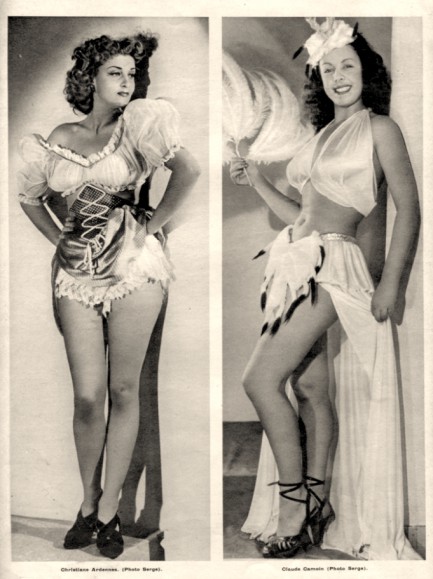 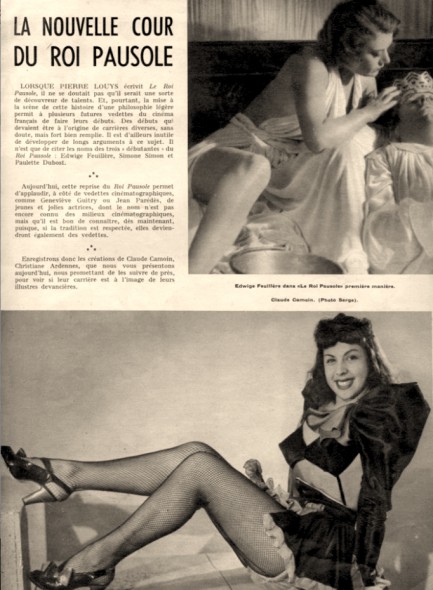 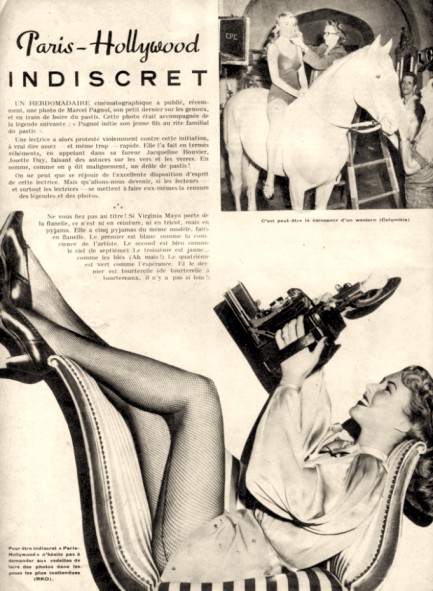 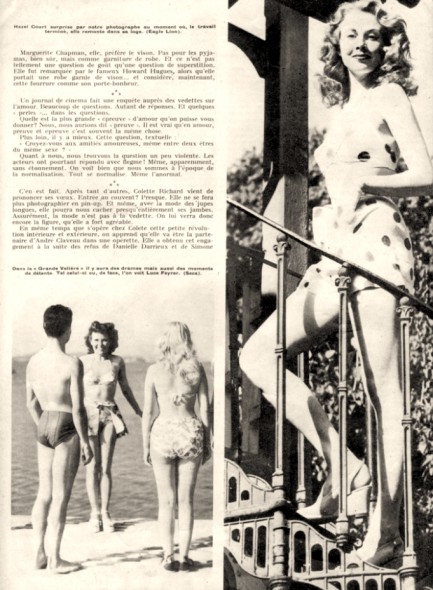 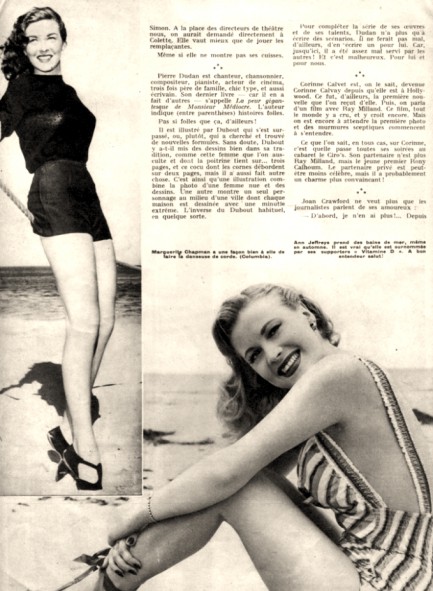 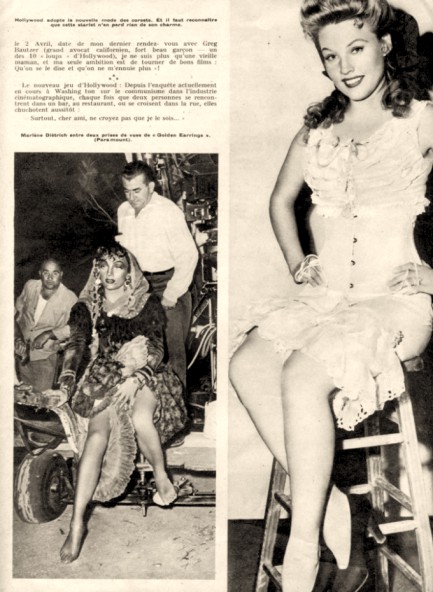 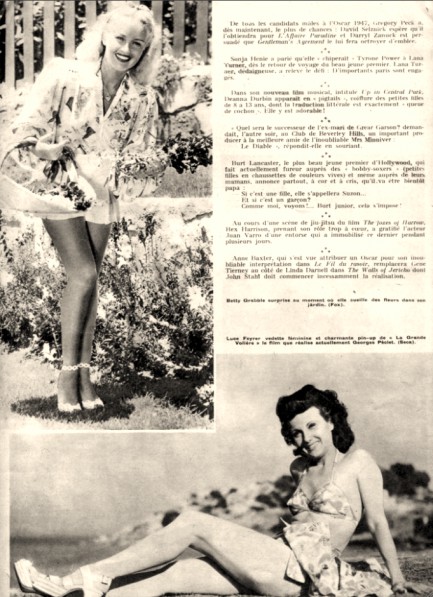 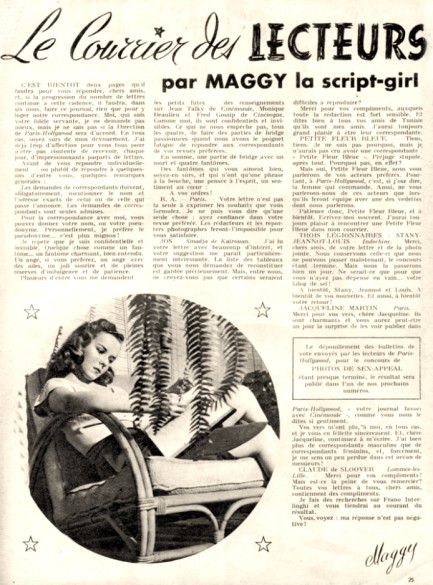 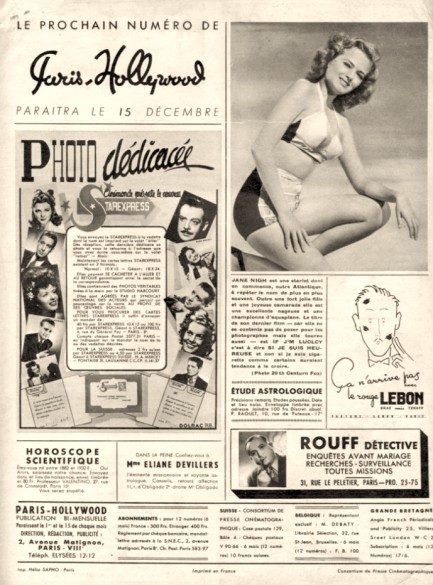 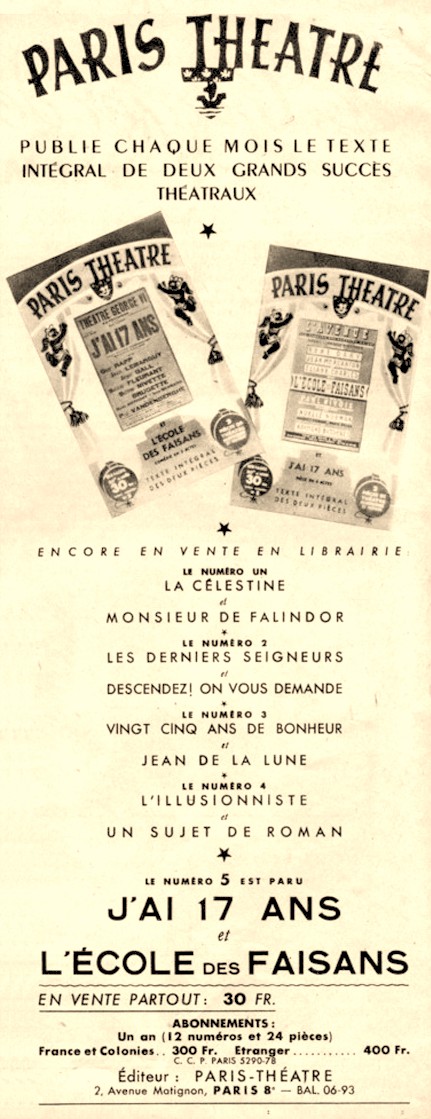 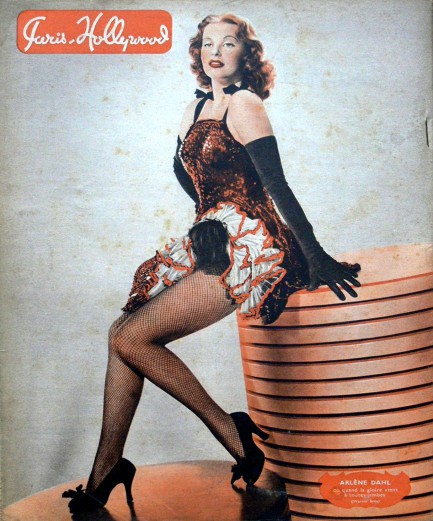
 The hungover and the restless. Below are two photos of American actress Marguerite Chapman after her 1958 arrest on suspicion of drunk driving. Chapman was well known at the time, having appeared in such films as Appointment in Berlin, Relentless, and The Seven Year Itch. She was detained after rear-ending another car in Hollywood and subsequently refusing to take a field sobriety test. After an unspecified number of hours in jail, she posted bail, and of course the tabloid press was there to document her release. 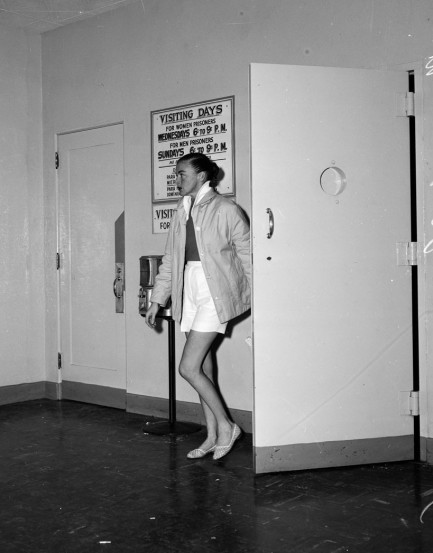 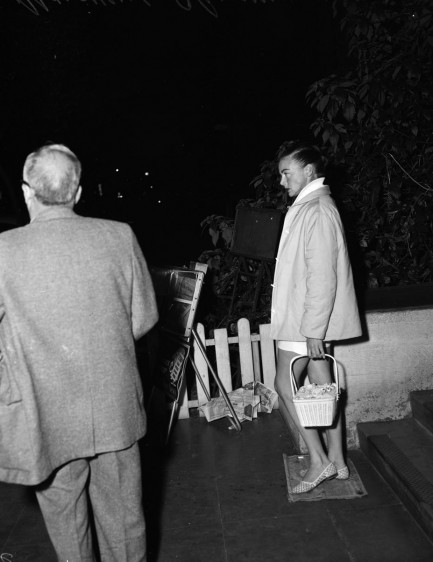
 The women inside the movie camera.
Below are eighteen timeless Hollywood leading ladies, some well-known, some less so, but all gleamingly beautiful. They are, top to bottom, Mari Blanchard, Carmen Phillips, Grace Kelly, Jane Adams, Joan Vohs, Martha Hyer, Laurette Luez, Tippi Hedren, Marguerite Chapman, Janet Leigh, Venetia Stevenson, Annabella, Muriel Barr, Lana Turner, Kim Novak, Paula Drew, Ann-Margret, and Vera Miles. Happy New Year.
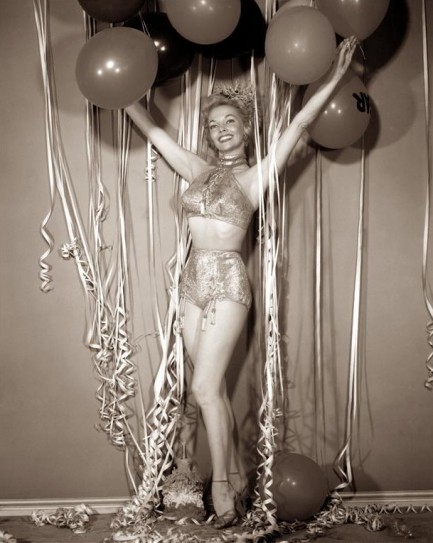 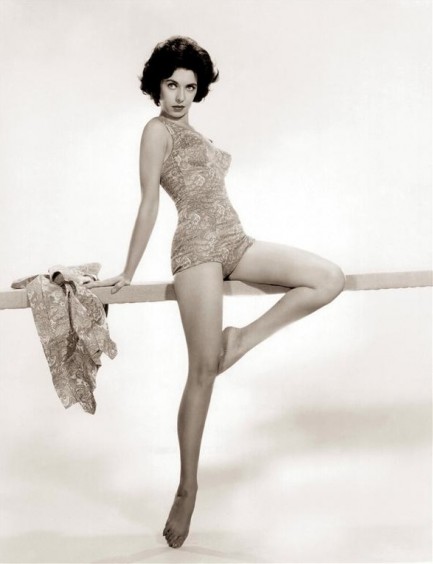 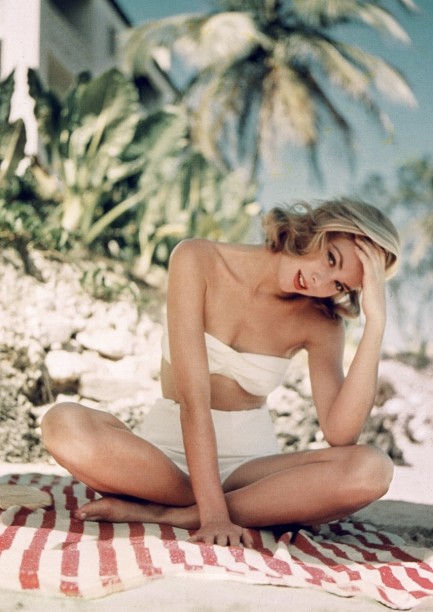 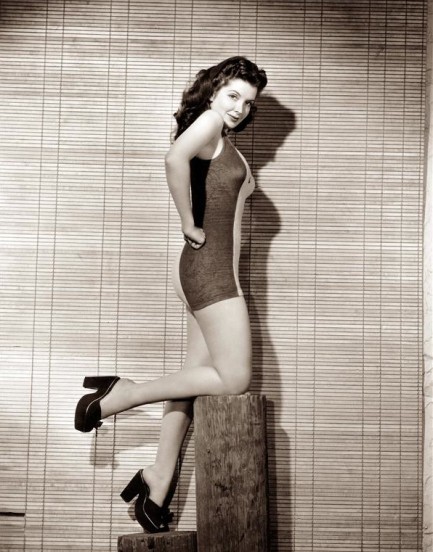 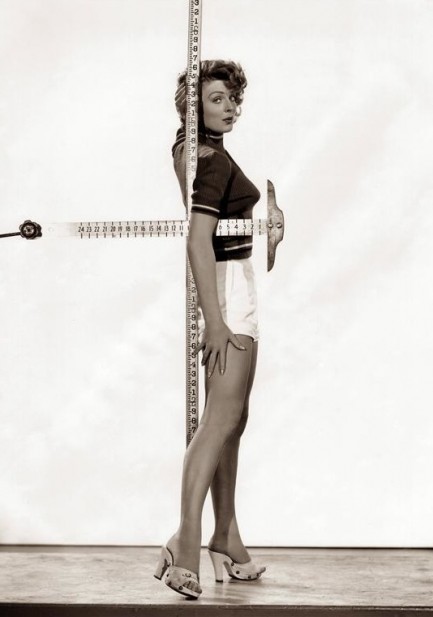 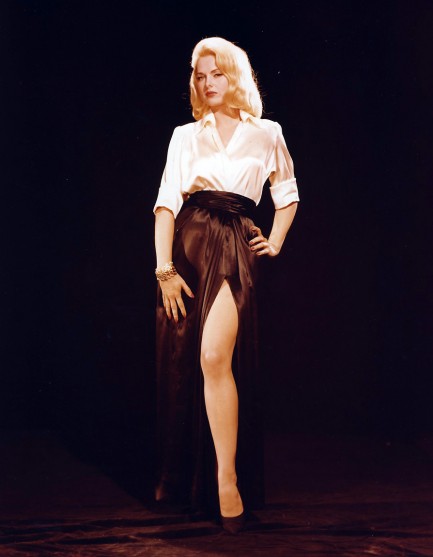 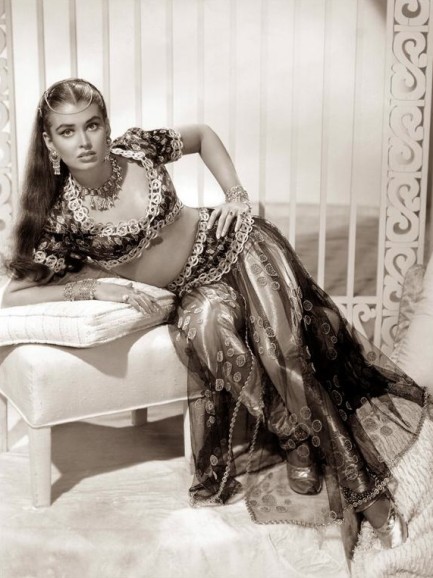 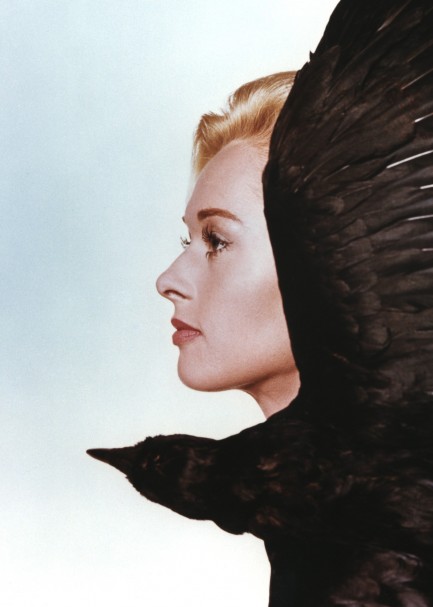 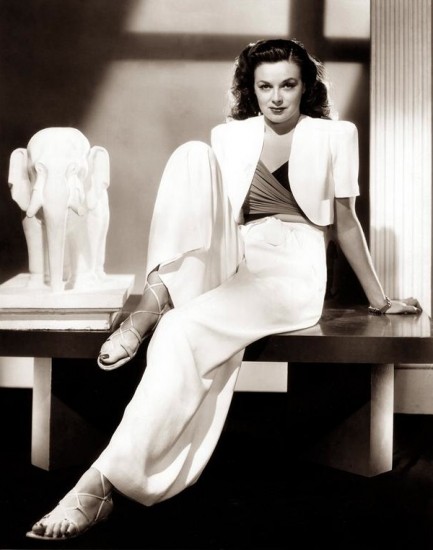 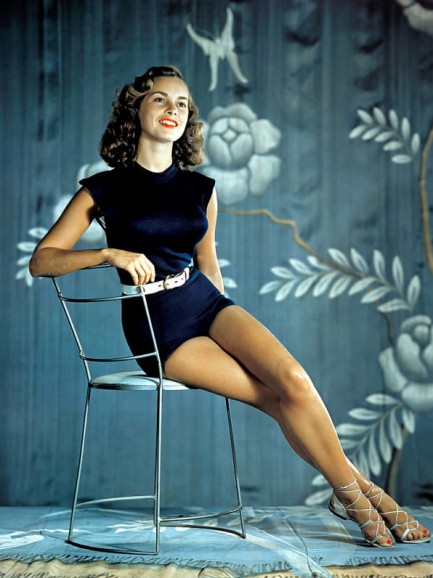 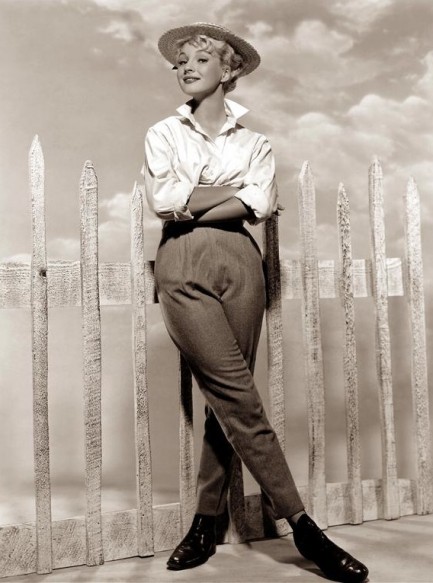 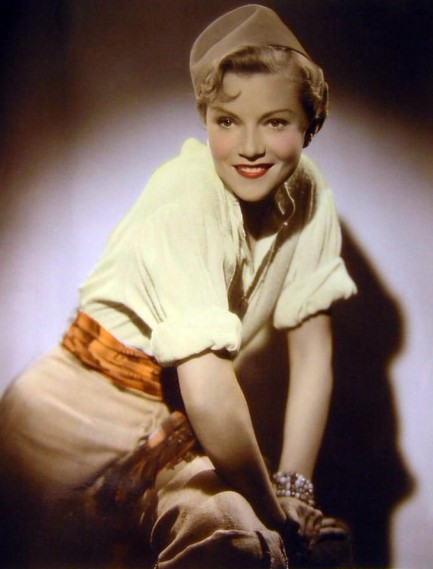 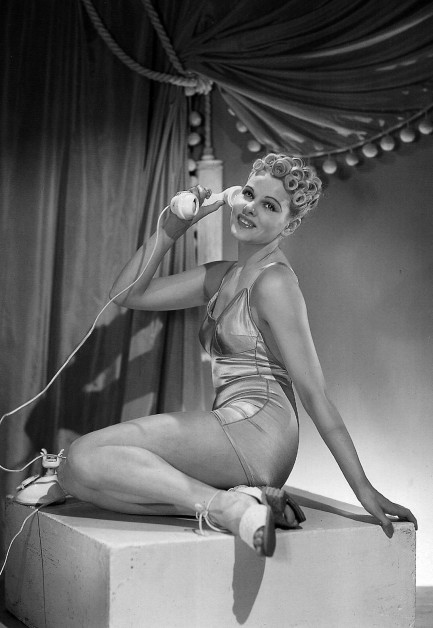 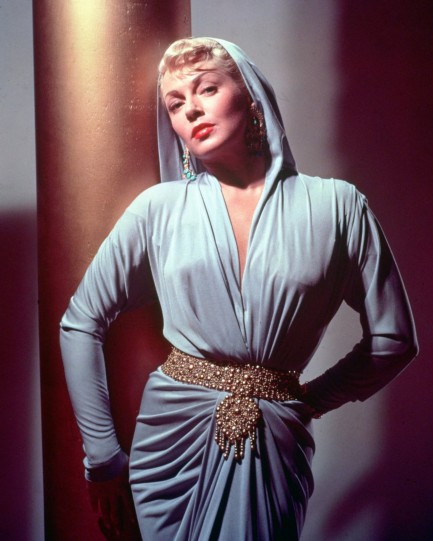 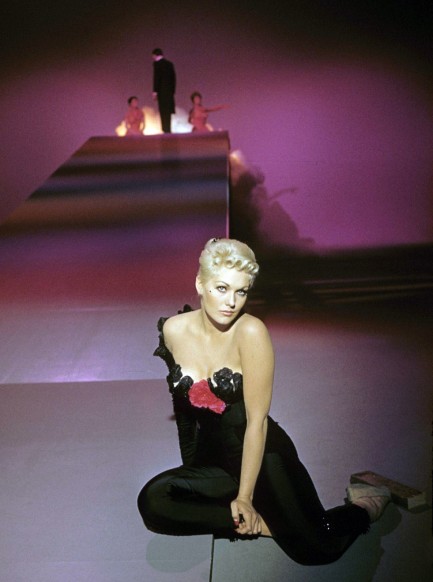 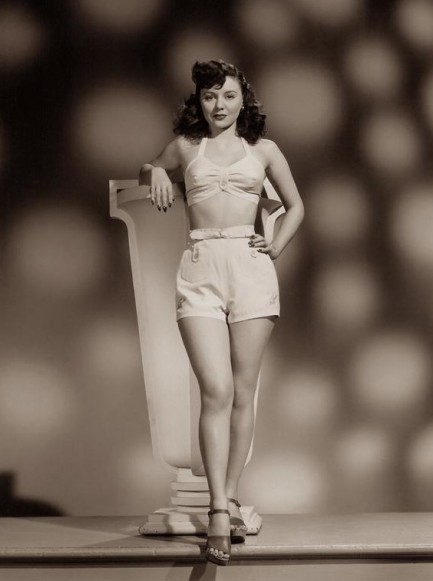 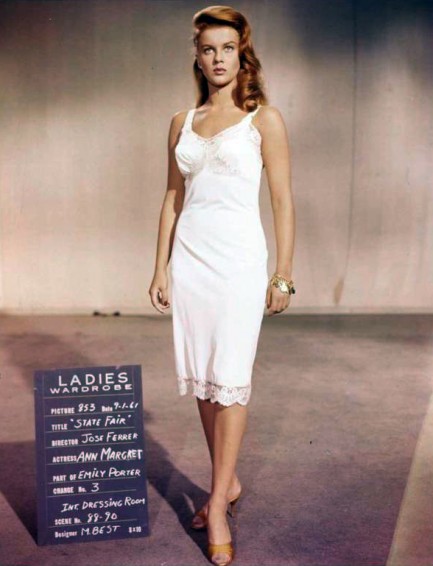 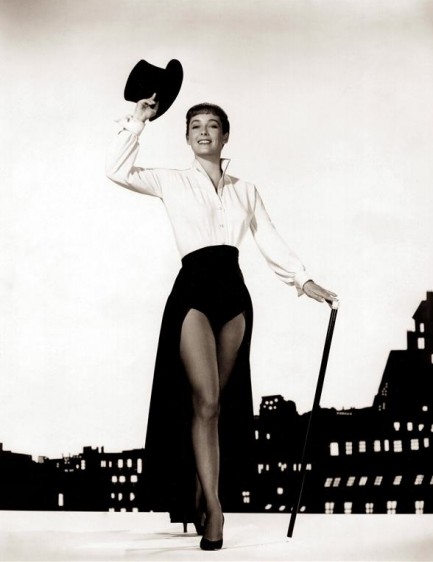
|
 |

The headlines that mattered yesteryear.
2003—Hope Dies
Film legend Bob Hope dies of pneumonia two months after celebrating his 100th birthday. 1945—Churchill Given the Sack
In spite of admiring Winston Churchill as a great wartime leader, Britons elect
Clement Attlee the nation's new prime minister in a sweeping victory for the Labour Party over the Conservatives. 1952—Evita Peron Dies
Eva Duarte de Peron, aka Evita, wife of the president of the Argentine Republic, dies from cancer at age 33. Evita had brought the working classes into a position of political power never witnessed before, but was hated by the nation's powerful military class. She is lain to rest in Milan, Italy in a secret grave under a nun's name, but is eventually returned to Argentina for reburial beside her husband in 1974. 1943—Mussolini Calls It Quits
Italian dictator Benito Mussolini steps down as head of the armed forces and the government. It soon becomes clear that Il Duce did not relinquish power voluntarily, but was forced to resign after former Fascist colleagues turned against him. He is later installed by Germany as leader of the Italian Social Republic in the north of the country, but is killed by partisans in 1945.
|

|
|

It's easy. We have an uploader that makes it a snap. Use it to submit your art, text, header, and subhead. Your post can be funny, serious, or anything in between, as long as it's vintage pulp. You'll get a byline and experience the fleeting pride of free authorship. We'll edit your post for typos, but the rest is up to you. Click here to give us your best shot.

|
|












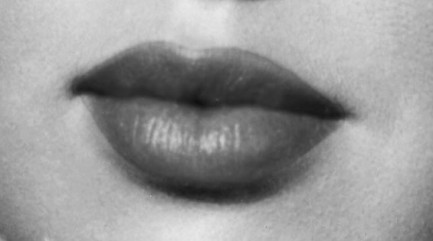


















 and we seem to be correct. Judge for yourself at right. At least her boob punishment was offset by the fact that her outfit was too flimsy to include one of the deadly corsets that sometimes made their way around stars' waists.
and we seem to be correct. Judge for yourself at right. At least her boob punishment was offset by the fact that her outfit was too flimsy to include one of the deadly corsets that sometimes made their way around stars' waists.













































































































































